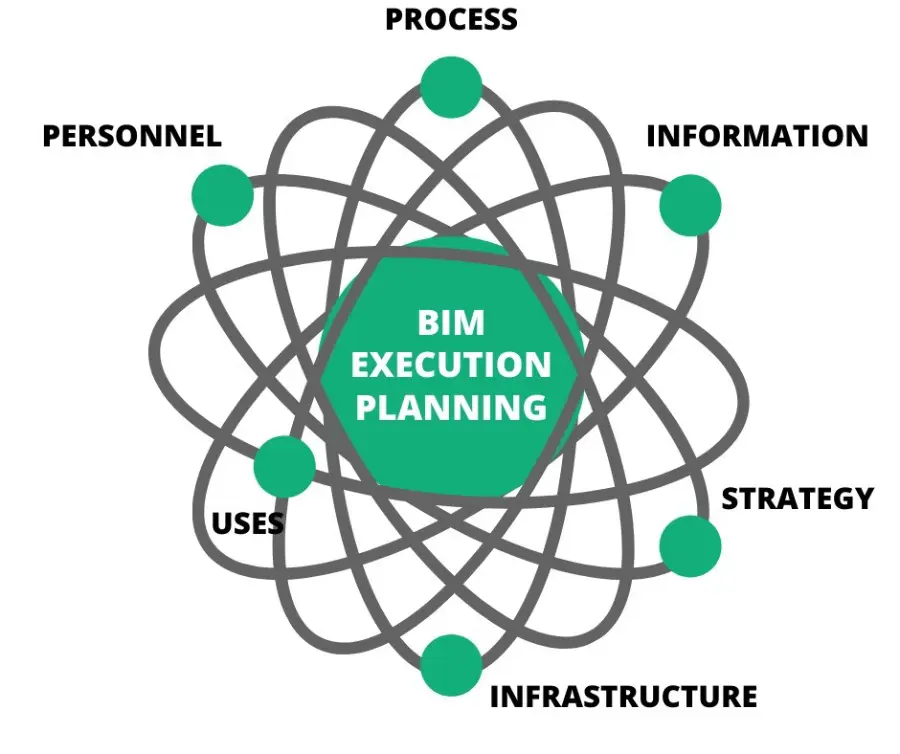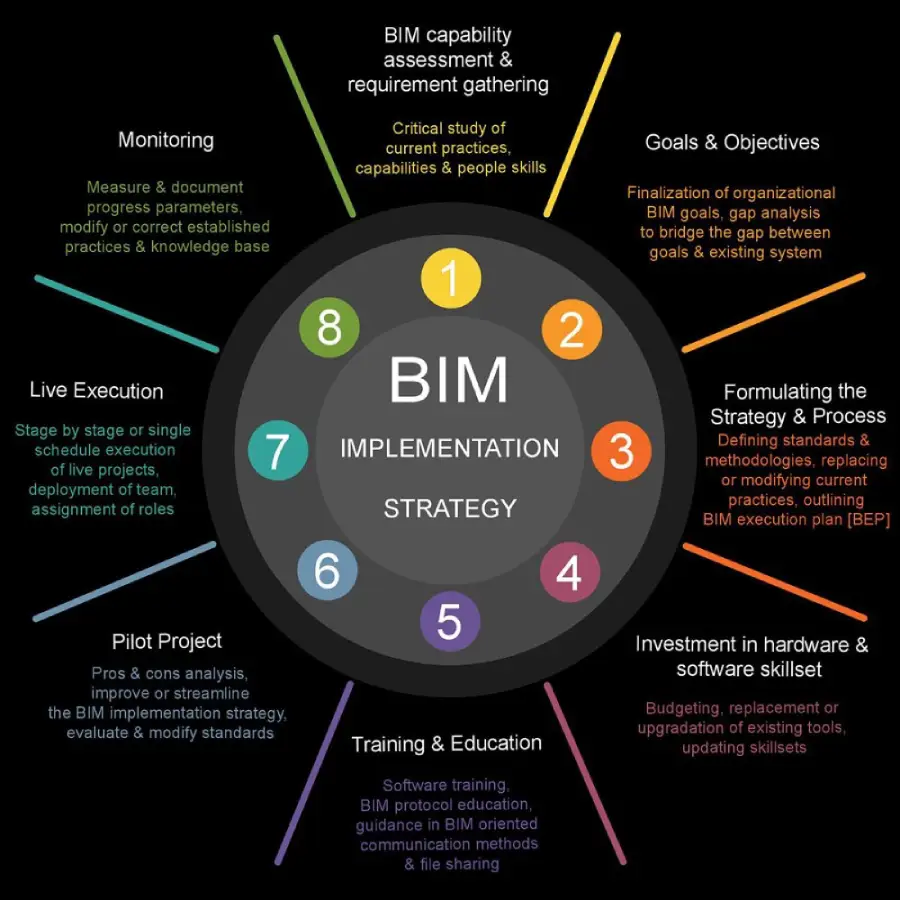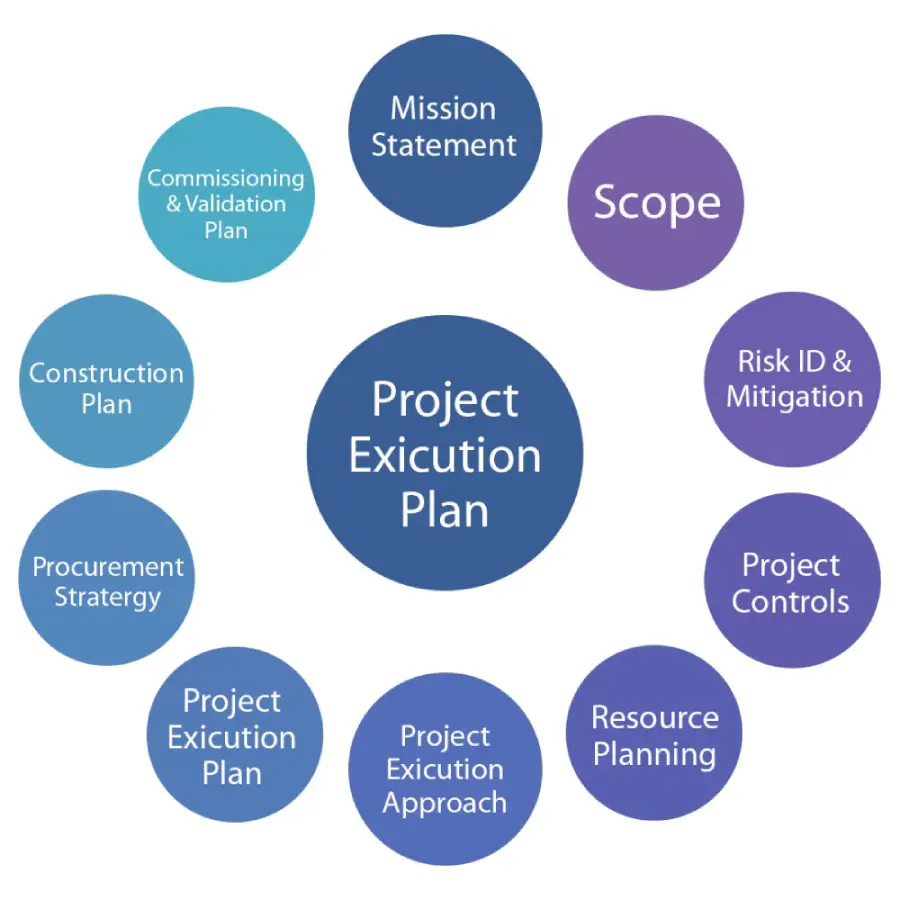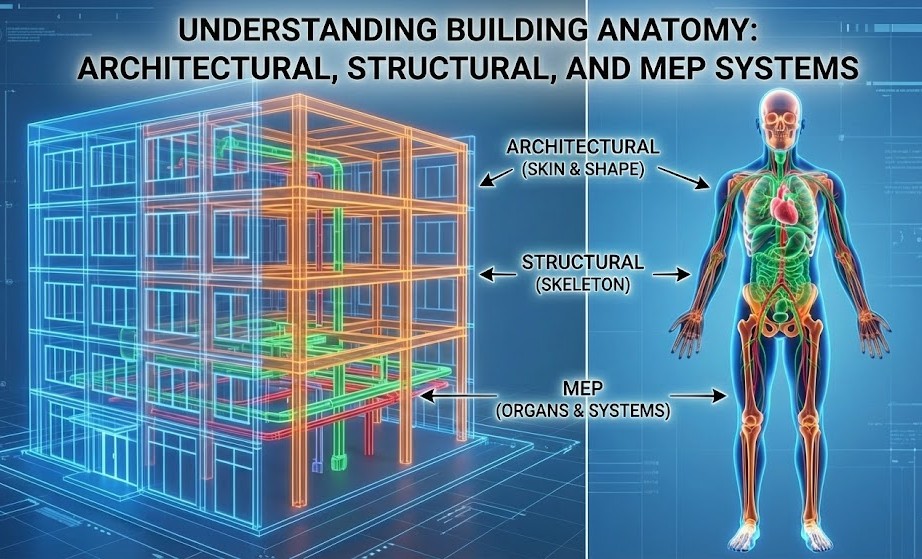
Author: Devika R
June 2, 2023
3 min read
Hello,LinkedIn community!
The BIM Execution Plan (BEP), the BIM Implementation Plan (BIP), and the Project Execution Plan (PEP) are three significant papers in the construction and engineering sectors that I’d want to clarify today. Let’s examine their special functions and importance in generating positive project outcomes.
BIM Execution Plan (BEP):

A BIM Execution Plan (BEP) is a detailed document that describes the building information modelling (BIM) methodology, standards, and protocols that will be used for a given project. With information on BIM deliverables, roles and duties, data sharing protocols, and quality control methods, it serves as a roadmap for implementing BIM throughout the project lifetime. The BEP enables seamless information flow among stakeholders, ensures effective collaboration, and improves project coordination.
BIM Implementation Plan (BIP):

The BIM Implementation Plan (BIP) adopts a more comprehensive approach while the BIM Execution Plan concentrates on the specifics of BIM implementation within a project. It describes the tactics and procedures necessary to implement BIM throughout an organisation or a department. The BIP includes all of the actions required to bring people, processes, and technology into line with the organisation’s BIM goals. It deals with issues including employee training, software uptake, data management practices, and interoperability standards. The BIP is crucial in helping an organisation become a BIM-ready culture.
Project Execution Plan (PEP):

Moving past the BIM sphere, we come across the PEP, which includes the overall plan for successfully completing a project. The project’s goals, scope, timetable, budget, quality management, and risk mitigation techniques are all detailed in this thorough document. The PEP combines a number of elements, including procurement, construction processes, health and safety plans, communication protocols, and stakeholder involvement tactics. To ensure clear direction, efficient collaboration, and successful project delivery, it acts as a framework for project teams.
In conclusion:
The BEP emphasises on implementing BIM specifically within a project, the BIP concentrates on integrating BIM across the organisation, and the PEP offers a comprehensive plan for carrying out the project as a whole. These documents complement each other’s goals and work synergistically to provide successful projects in the continually changing construction industry of today.
We can explore what it takes to become a BIM engineer in this blog post. Everything will be discussed, including educational prerequisites and job seeking tactics. So grab a brew and come on over to BIM Cafe if you’re eager to discover how you can get involved in this fascinating subject!
Certainly! If you’re interested in learning more about BIM Cafe & Professional courses, you can contact the BIM Cafe team for further information. You can reach them through the following contact details:
Email: [email protected]
Phone: +91 97781 35014, +91 90721 35014
Social Medias:https://www.instagram.com/bimcafe/, https://shorturl.at/FGO47
BIM Cafe offers comprehensive training on Building Information Modeling, covering both the fundamentals (basic) and advanced (professional) aspects of the subject. They can provide you with detailed course information, curriculum, duration, fees, and any other specific inquiries you may have.
Feel free to reach out to them via email or phone, and they will be able to assist you further with your BIM training needs.





